Posted by Thomas Gomez on 2022 Nov 17th
Inside MDT - Hunting In Inclement Weather
Rain and snow can damage electronics, render your optics inoperable, build up pressure in your barrel and chamber, and potentially damage your rifle. Besides affecting your rifle and kit, rain and snow can pose a challenge for thermoregulation, potentially causing hypothermia and loss of life.
Hunting season is in full swing, and many hunters are fighting the natural elements in pursuit of game. Before going to the field, use this short guide to weatherproof your gear and prep yourself. We also included some tips on how to use inclement weather to your advantage.
More: Tips for Cold Weather Shooting
DRESS FOR THE WEATHER
Before I delve into gear, I want to stress the importance of not underestimating the weather, even during the Summer. In my home state of New Mexico, I have experienced hail and snow during the Summer months while adventuring in the Southern Rockies. Wear high-performance clothing and wool that is moisture-wicking and water-resistant, and avoid cotton as much as possible. Cotton holds moisture, which can freeze as temperatures drop and quickly lower your body temperature.

Wear an outer shell and dress in layers when hunting in bad weather.
Do your best to stay dry and keep yourself warm. Dress in layers and add or strip off layers as necessary. If you are exerting yourself, remove layers to avoid excessive sweating. Sweating can speed up dehydration but also puts a layer of moisture directly on your skin which can quickly freeze when temperatures drop. Wear good boots that are water-resistant and pair them with quality wool socks. I usually wear a wool t-shirt, wool or synthetic down mid-layer if it is freezing, and a camouflage shell-style hoodie or jacket. For feet and leggings, I wear Solomon boots, Smartwool socks, high-performance leggings, and a water-resistant pant from KUIU or 5.11.
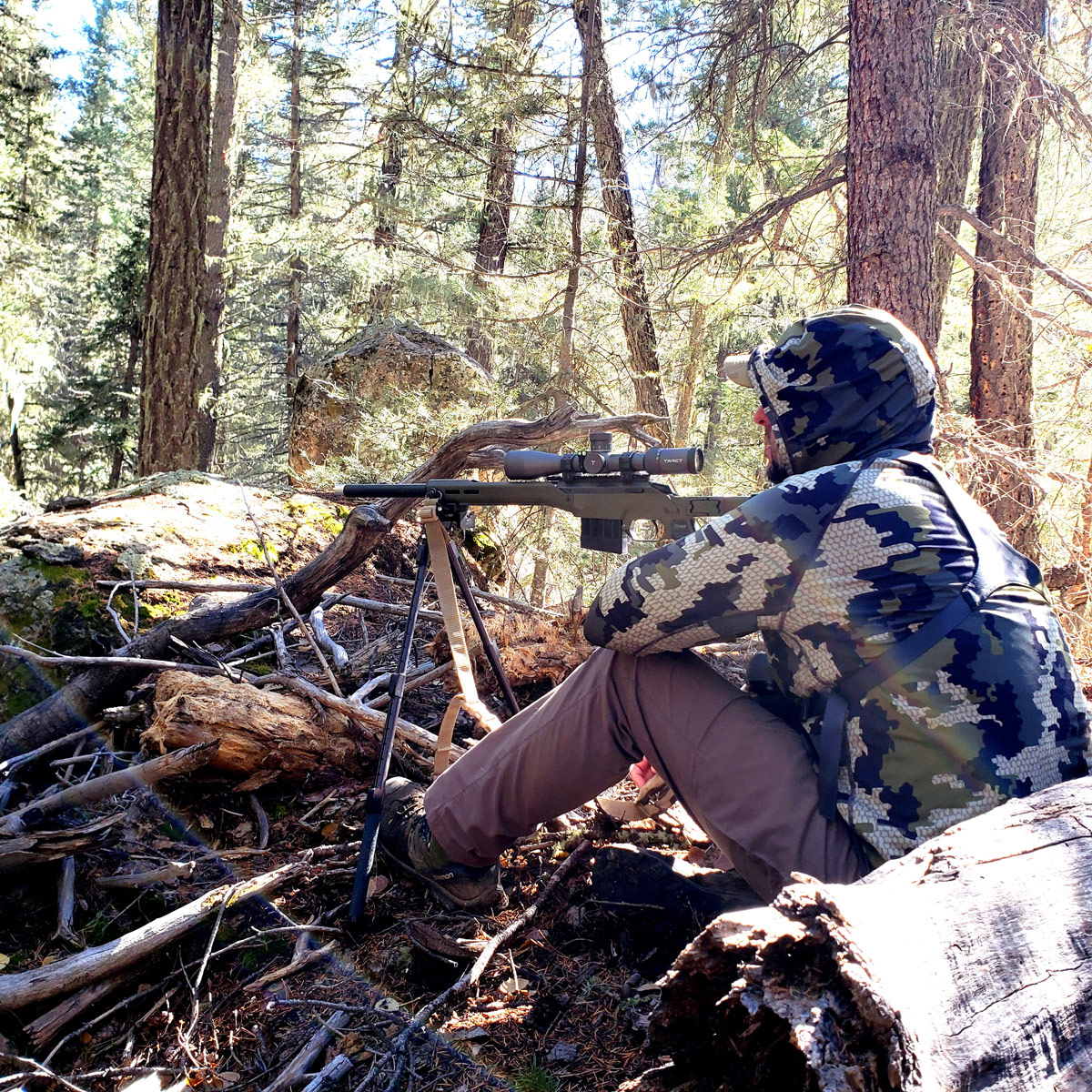
Thermoregulation is key to high-performance in the woods. Custom Tikka 6.5 PRC/MDT HNT26 Chassis. TRACT Rifle Scope, and MDT Triple Pull CKYE-POD.
CARRY A SURVIVAL KIT
People can get crazy with survival kits, which means that the survival kit can get heavy fast. My survival kit includes food, tools for making fire, water purification, and a small medical kit, including a tourniquet. This is the bare minimum which will allow me to solve most problems I will encounter in the field but stay light to where it will not slow me down and save room for hunting, shooting, and game processing kit.
Two critical pieces of kit that are essential for the backcountry are a satellite communications device and a CAT Tourniquet from North American Rescue. I had a friend die when he was accidentally shot in a lower limb while hunting in Texas. The guide tried to improvise a tourniquet which failed miserably. When seconds matter, you do not have time to make a tourniquet. Carry a real CAT Tourniquet, not a cheap imitation, and get training on how to use it.
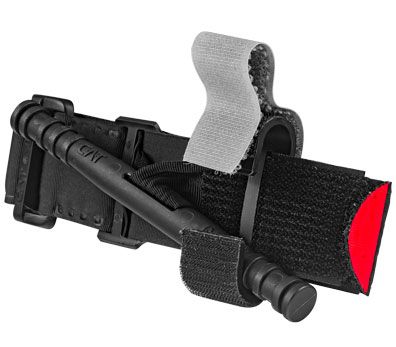
Carry a real CAT Tourniquet from North American Rescue. These tourniquets will not fail during use.
MY SURVIVAL KIT
- SPOT X 2-Way Satellite Messenger. Any satellite device is fine, just carry one.
- Ferro rod, matches, tinder, and lighter
- Paracord
- Space Blanket for quickly building a shelter
- LifeStraw and Water Purification Tablets
- Headlamp and extra batteries
- Glowstick
- Electrolyte packets
- Bandages, medical tape, antiseptic cream
- CAT Tourniquet
- 1,000 calories worth of snacks
All of the above can fit in a small nylon pouch, compression sack, or small dry bag. Even when not hunting, I have all of the above in a backpack. I carry several fixed-blade knives when hunting and a water bottle or canteen. If you typically don't carry a knife or water bottle, add both to your kit.

A satellite communications device is absolutely necessary in the backcountry, especially if hunting solo.
WEATHERPROOF KEY GEAR
When I am in the woods, the gear I am most concerned about keeping dry and free from moisture is my rifle, rifle scope, ammunition, range finder, binoculars, and Kestrel 5700. Below are my personal notes and strategies for hunting in bad weather.
- My colleague and fellow Inside MDT writer, Al Voth, wrote an excellent article on hunting in the cold. It is worth a read.
- If I know I am going to be hunting in wet or snowy conditions; I will tape my muzzle to keep out moisture and cover my scope lenses so as not to accumulate snow and moisture. I also use synthetic lube to keep my action from locking up.
- If I am stalking an animal, I will carry the rifle muzzle down with, at a minimum, the rear or ocular lens covered to prevent snow and moisture from building up on the lens. I remember stalking an elk with a friend in a meadow in the middle of a blizzard. When we got within range, my friend brought his rifle up to shoot, only to find his ocular lens completely covered in snow. Carry a microfiber to wipe away snow and moisture. Do not blow on your lens or use a cold glove to wipe away snow.
- If I am rucking in during a blizzard or a storm, I will cover my entire scope with a neoprene cover or fold up my MDT HNT26-equipped rifle in my ruck.
- My Kestrel 5700, SIG rangefinder, and spare ammo stay in a dry bag tucked in my ruck. Ultimately the Kestrel and rangefinder will make their way into my waterproof KUIU binocular harness.
- If it is absolutely pouring rain or snow, I will write out a DOPE card and keep it in a waterproof armband card holder on my forearm. Bad weather lets me get closer to animals, so I usually do not need to leverage the benefits of my Kestrel 5700.
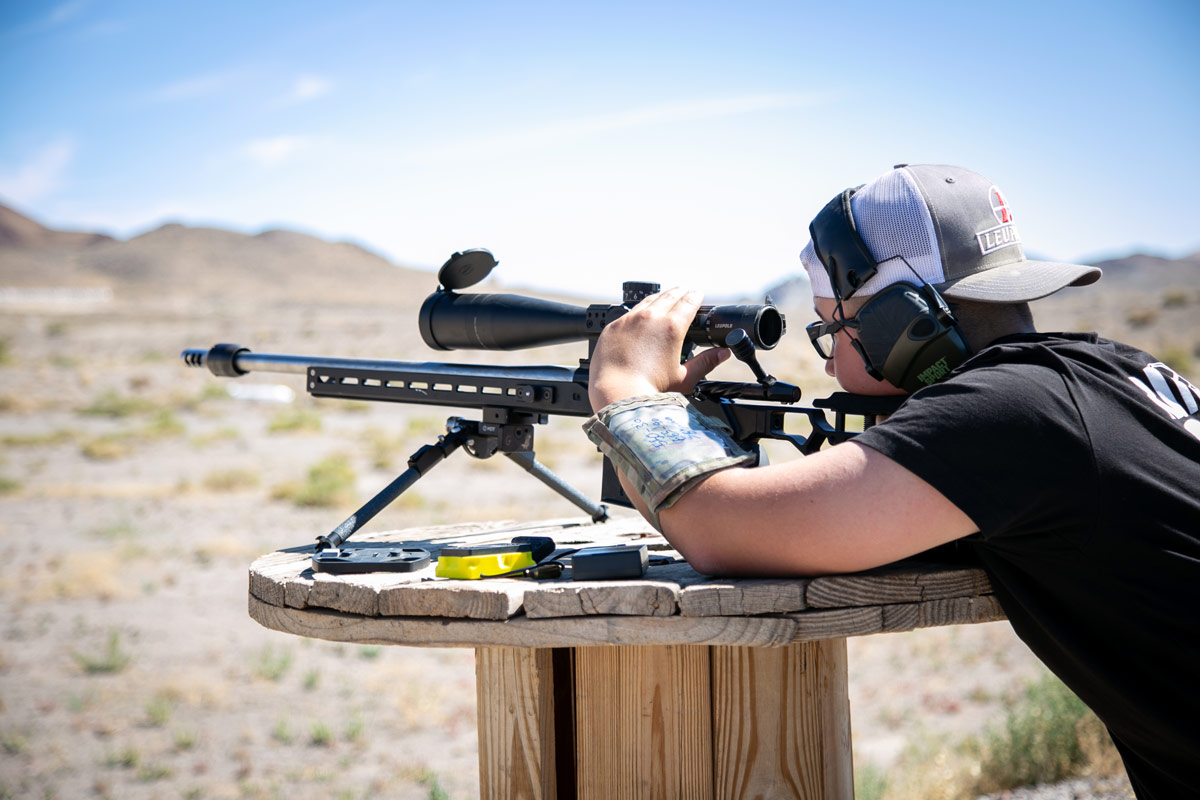
Armbands are great for DOPE cards when hunting. I wear one just in case I have to contend with bad weather, or as a backup to my Kestrel 5700.
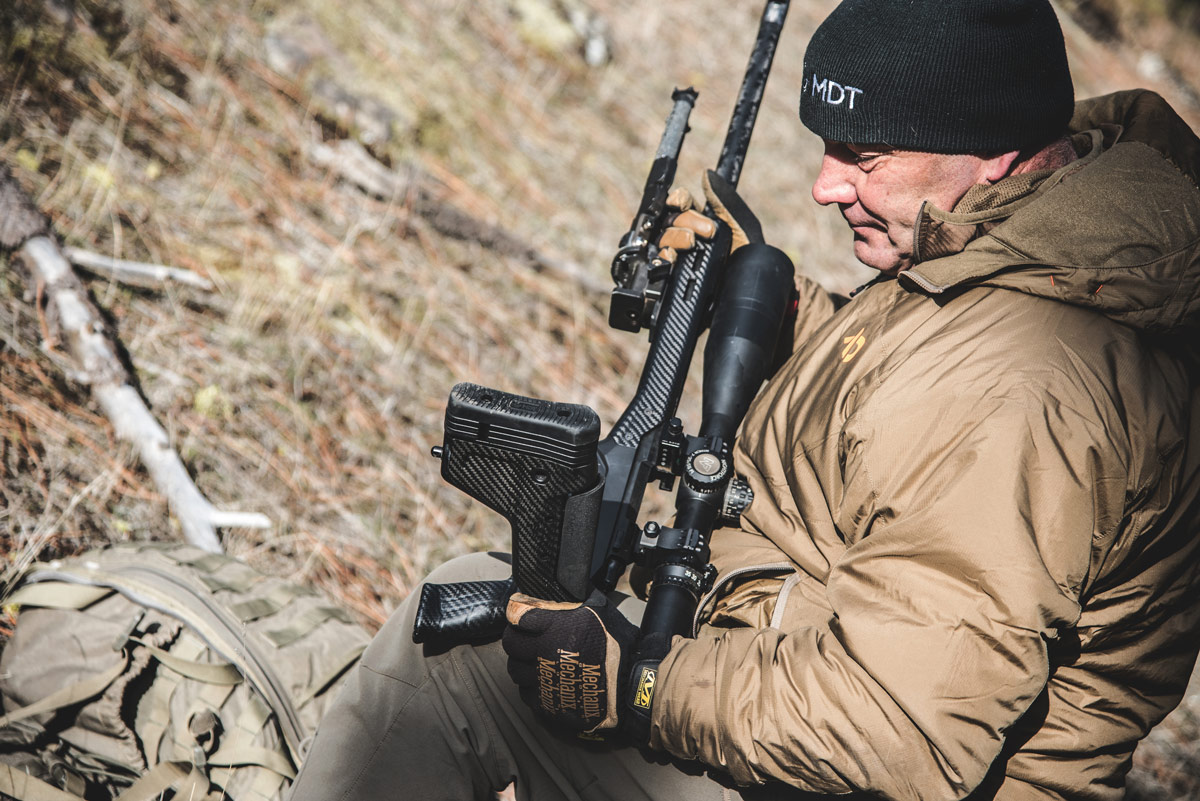
Having a folding chassis allows you to stow your rifle in your ruck to keep it free from snow and moisture.
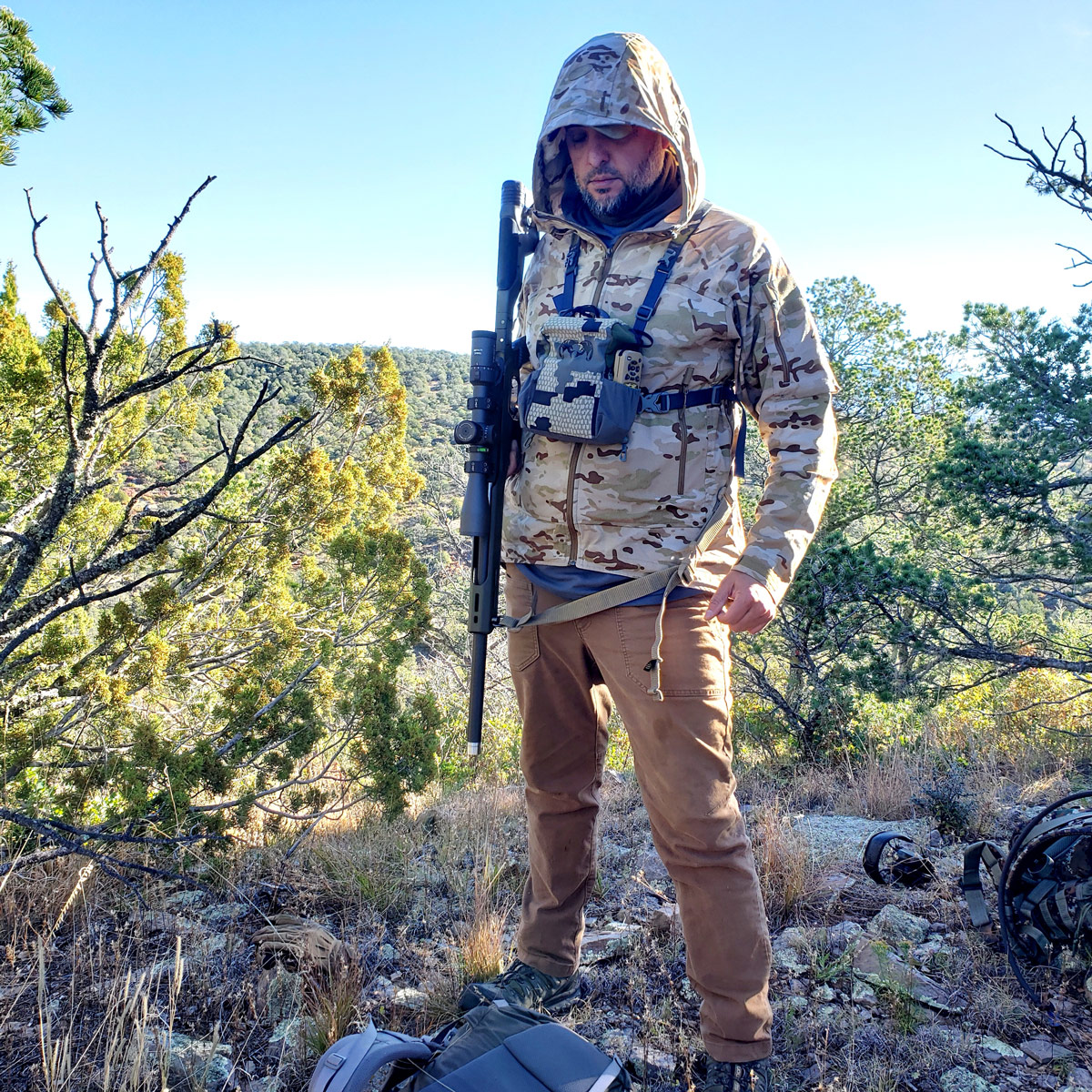
Layers, camouflage shell from First Spear, 5.11 pants, Solomon boots, waterproof binocular harness for my rangefinder, Kestrel 5700, and cell phone/OnX Hunt. Minutes after harvesting a New Mexico Mule Deer.
AWESOME HUNTING VIDEOS FROM MDT!
- Modern Muzzle Loader Black Bear Hunt | British Columbia Interior
- Ryan's Redemption | British Columbia Black Bear Hunt
- Idaho Spring Bear Hunt Adventure with Long Range Rifles
USE THE WEATHER TO YOUR ADVANTAGE
Bad weather does not mean your chances of harvesting an animal have decreased. If anything, bad weather creates a set of variables that can be leveraged to help you walk out of the woods with an animal. Below are some of my tips and experiences tracking and stalking animals in inclement weather.
- Snow and rain can make animals bed down. This allows you to get into a key position overlooking meadows and canyons, so when the rain or snow stops, the animals will break out of cover and return to feeding. The snow and rain can cover your movement into these key areas.
- Snow and rain make it easier to spot tracks, especially when glassing. I pray for fresh snow when I am hunting for elk in the winter. Snow can move animals down to lower elevations and we simply glass, drive, ruck till we see tracks, then follow the tracks till we find the animals. This can be anywhere from a 1-mile ruck to a 15-mile ruck so prepare accordingly.
- Inclement weather can allow you to get closer to animals, so expect a fast close-up shot. Dial your optics down to a low setting and expect game at any moment. Walk 20 steps, then listen for 20 seconds. Glass the thicket and look for animals that are bedded down.
- Snow can be your best friend when packing out an animal. If you expect heavy snow, take a lightweight plastic roll-up sled and pull your animal out of the woods. My goddaughter harvested a large elk in the Valles Caldera National Preserve several years ago, and after processing the animal, we put the meat on a sled and whisked it back to the truck.
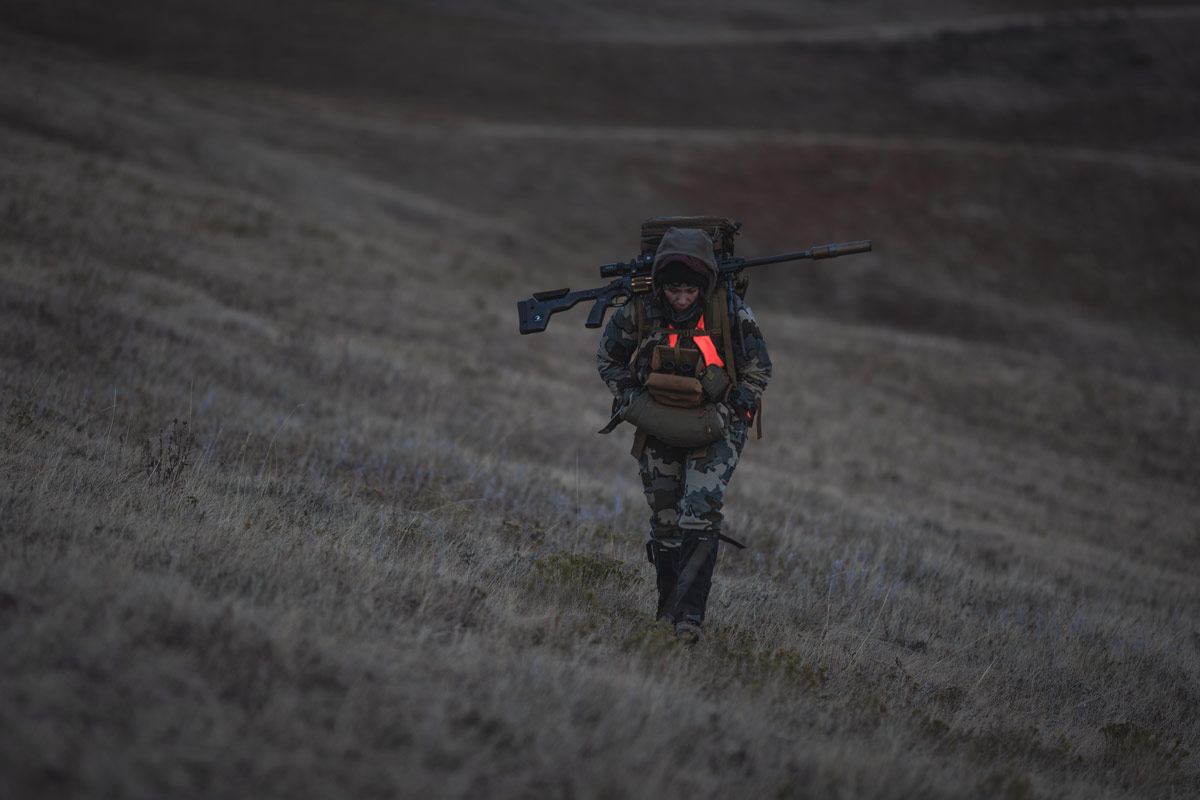
Excellent gear, iron will, and a positive mindset will lead to success.
Hunting is a unique experience with a lot of highs and lows. Bad weather adds a layer of complexity that can be leveraged in your favor, and unless the weather is truly life-threatening, it should not keep you from hunting. Hunt smart, prepare, go into the woods with an expeditionary mindset and be safe. Good luck!
HUNTING RESOURCES FROM MDT
- Tips For A Successful Antelope Hunt
- Analysis: Long Range Hunting
- MDT Field Report - Why The Triple Pull CKYE-POD is a Guides Best Friend
- Tips for Cold Weather Shooting
- How To Optimize Your Rifle For Positional Shooting
- The Modern Hunting Vest
- Hunting With The MDT XRS Chassis System
- Hunting Stocks Versus PRS-Style Competition Stocks
- Predator Hunting with a Chassis Rifle
- Maximize Performance with Mental Imagery
- Confidence Kills
ABOUT THE AUTHOR
Thomas Gomez is the founder and C.E.O. of High Desert Rifle Works. He has over twelve years of experience in the Healthcare, Tech, and Outdoor Industries, working as an analyst, researcher, consultant, technical writer, and program manager. Thomas has an M.B.A. from Western New Mexico University, numerous armorer certifications, and teaches precision rifle for Q Pro Defense. He spends his free time ranching, farming, fly-fishing, and hunting the high deserts and mountains of his native New Mexico. He can be reached via Instagram @highdesertthomas.


 CAD
CAD
 Euro
Euro
